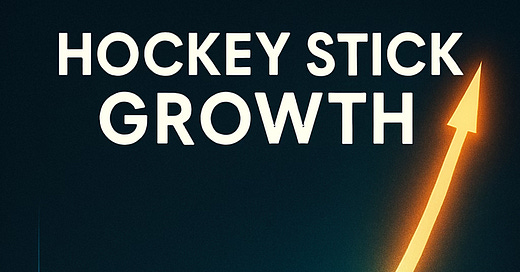Hockey Stick Growth in Life Sciences: The Dream, the Data, and the Discipline
Why explosive growth in life sciences looks different — and how great investors recognize it before it happens.
Dear Readers,
Welcome to the latest edition of the HealthVC newsletter!
What it really means and how to recognize it before the curve turns.
One of the most overused phrases in venture capital also happens to be one of the most misunderstood. Everyone wants “hockey stick growth,” but few stop to ask what that truly looks like in a science-based business, …



